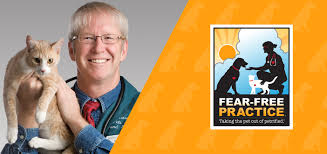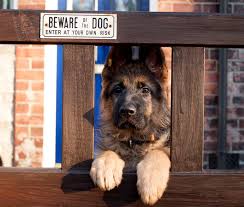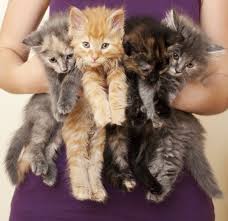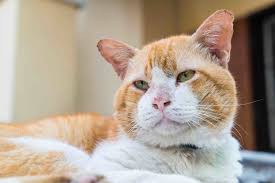The Science Behind Loving Our Pets
John Bradshaw, The Animals Among Us
 Anthrozoologist John Bradshaw says our love for pets is in our DNA. It's likely that if our parents carried the gene, you'll inherently love pets. John explains why humans are genetically encoded to enjoy companion animals in his new book, The Animals Among Us: How Pets Make Us Human.
Anthrozoologist John Bradshaw says our love for pets is in our DNA. It's likely that if our parents carried the gene, you'll inherently love pets. John explains why humans are genetically encoded to enjoy companion animals in his new book, The Animals Among Us: How Pets Make Us Human.
Twenty years ago pets were outside with dogs in the backyard in their little doghouses, but now they're in the house and we treat them like a family member.
Anthropologists have looked societies all over the world, both in the 19th and 20th centuries, which were kind of emerging from the Stone Age, and found that all of those societies pretty much worldwide had pets. However, they were not conventional dogs and cats. Obviously they hadn't had access to those. But what they had done was to take young wild animals out of the wild, adopted them and treated them as family members. So this is not just something that's emerged in western society over the last half-century or so. It is actually something that has been going on in various ways in various forms for tens of thousands of years. And so that's why John thinks it's a really intrinsic cause of human nature. It's something that makes us human.
So why did we choose to make some animals our pets and bring them into our homes and other animals we chose to eat?
John thinks this is a very cultural thing that varies from different parts of the world. Now it's varied across history and there are some parts of the world where dogs, or some kinds of dogs, are considered to be perfectly acceptable as food. On the other side, there are many parts of the world, the United States included and the UK as well, where that's an absolutely abhorrent disgusting idea. So it's not so much the animals themselves. Those have just come on different journeys to where they are now. However, which animals we choose to eat and which animals we choose to regard as family members is something that we just grow up with. We learn it from our parents and from the people around us.
Oftentimes the animals don't go out work they don't bring home a paycheck. So why do we spend so much time and energy and love these animals even though they're unproductive members of society?
John claims the short answer, or the initial answer, is well they make us feel good. Not all of us, which has to be said, people do vary and there just seems to be some genetics behind that. People do vary in how appealing they find animals and how much of a buzz they get from talking to them and stroking them and petting him that kind of thing. And those of us who do get a buzz from that, there's been good science done to show that it's not just something that happens in your mind. It actually changes the hormone circulation in your bloodstream; you get endorphins peaking, which give you that good feeling, a rewarding feeling. You get oxytocin peaking as well, which makes you feel affection for the animal. So there's a good basis for this. It's not just something that people imagine that they've kind of dreamt up over the past few years as something that might be just fun to do.
It's something, which is right there deep down in human nature, to feel this way. What John finds interesting is why do we feel this way. Why have we evolved this thing, which is not going to benefit the other fellow humans, its only going to benefit the animals? He thinks that is why we love and feel affection for animals. It's such an intriguing part of human nature.
So why do some people in one family love animals while others in the same family couldn't care less?
John claims that there's evidence it's genetic. But that maybe sometimes those tendencies don't emerge until adulthood. Some children, whether they copy their parents or kind of go against them, is a very complex issue and it doesn't just apply to animals it applies to all kinds of aspects of bringing up kids. But when people look at adults and how they feel about animals, the two main influences seem to be including the kind of things those people have encountered in their lifetimes since they became adults. So they've had good experiences with pets or they've known other people who've had good experiences. They then tend to feel well disposed towards animals in general. But there is also a genetic influence, which comes through from the parents, but it could of course just be the one parent. So you're going to get an amount of variation.
 Some people just don't get it. There are some people who have never had a connection to an animal. John tells us it is a lot about experiences. Whether people turn to really becoming animal lovers when they become adults it is about experience. It's not simply about the family you grew up in.
Some people just don't get it. There are some people who have never had a connection to an animal. John tells us it is a lot about experiences. Whether people turn to really becoming animal lovers when they become adults it is about experience. It's not simply about the family you grew up in.
It has been suggested that there really is no influence from your actual family environment. Whether your parents actually had pets or not doesn't seem to affect whether you like them or not.
Right now John doesn't have any pets. The reason for that is that he looks after his grandkids a lot and one of them is very, very allergic. So, he couldn't look after him if had animals. He did have a lot of cats, which died of natural causes around the time that his grandchild was born. When he's a little older, John will get animals once again.
John has had animals around forty-five years now, since he was in college. He likes animals, but from his own perspective, he's not so keen on them that he can't live without them. His interest is also coming from studying them and trying to work out what it is about animals that's appealing rather than simply indulging himself in them.
Does John think new parents should consider bringing a dog or a cat or some kind of animal household to show their children empathy? Animals are also supposed to help children become less allergic to animals if they are exposed to them while they are young.
There are benefits, according to John; to different kinds of allergens we expose our kids to, particularly in the West where the environment is pretty sterile. People in the West seem to keep their apartments and houses very clean. They use a lot of disinfectants in a way that our ancestors did not, as they didn't have access to those things. So our children are not exposed to all sorts of allergens, which our parents and we were exposed to. John thinks that most pediatricians would argue that that's a good thing for children to have pets, not all of them, but most of them would. From John's more of a psychological and developmental point of view, there really isn't proof that pets help children to get on better with other kids. That does actually not seem to have been borne out of the studies that have been done.
But what has emerged is that it helps them to understand life, which is an incredibly important message for children nowadays. Children encounter almost everything through screens in a way, which we didn't nor did our parents. You don't get the full essence of anything through a screen. You get a pre-digested, two-dimensional picture of it, whereas John thinks it's very important that kids grow up knowing about life. That living things are not simply something you can switch off when you get bored with them. That they're there 24/7 and they need you and you need them. Sometimes they are great and cute and sometimes they're messy and annoying.
That's a great life lesson to learn, that you can't expect anything that's alive to be perfect all the time. In broader terms, if we expect the next generation to protect the environment for animals and for themselves, if they don't really understand what an animal is in glorious three dimensions and all the smells and everything else they have, I don't think they're going to be motivated to do that.
You can learn more in John's his new book, The Animals Among Us: How Pets Make Us Human.
Visit Website
The Importance of Pet Enrichment
Dr. Marty Becker, Fear Free
 It isn't enough to supply food, shelter and health care for your pet. They need more. Your pet needs enrichment. This could mean anything from food puzzles to exercise.
It isn't enough to supply food, shelter and health care for your pet. They need more. Your pet needs enrichment. This could mean anything from food puzzles to exercise.
Dr. Marty Becker is the father of Fear Free. While some veterinarians have been practicing this for a while, he's the guy who put it all together and is certifying veterinarians across the country. Now Dr. Becker is bringing it into your household so you can have a Fear Free Happy Home. He's doing this by teaching you how to enrich your pet's life.
The Fear Free Movement has been amazing. Dr. Becker states many veterinarians and veterinary technicians have become involved in this and are becoming certified. But there are things we can do at home to make our homes fear free happy as well.
It's no surprise that many people have behavior problems with their pets. They either know somebody, or they themselves have a pet that hates to go the vet and hates to go to the groomer. These animals have issues of emotional well-being, whether it's separation anxiety, thunderstorm phobias or some other kind of noise phobias.
What Fear Free Happy Homes is set to do is two things. One is to reduce fear anxiety and stress in the home. And the other thing is to increase enrichment activities.
 Dr. Becker grew up on a farm and ranch in Southern Idaho. When you think of Southern Idaho you think of potatoes. And yes one of the crops he grew was famous Idaho potatoes. But back then dogs had a job to do. They had a utilitarian role and so did cats. The dogs herded cattle. They alarmed bark when somebody came over and they retrieved ducks for the hunters. The cats were barn cats, they were mousers protecting the grain. What has happened over the 40 years that Dr. Becker has been a veterinarian is that cats have gone from mousers to moochers and dogs have gone from guard dogs to lard dogs.
Dr. Becker grew up on a farm and ranch in Southern Idaho. When you think of Southern Idaho you think of potatoes. And yes one of the crops he grew was famous Idaho potatoes. But back then dogs had a job to do. They had a utilitarian role and so did cats. The dogs herded cattle. They alarmed bark when somebody came over and they retrieved ducks for the hunters. The cats were barn cats, they were mousers protecting the grain. What has happened over the 40 years that Dr. Becker has been a veterinarian is that cats have gone from mousers to moochers and dogs have gone from guard dogs to lard dogs.
Think of this, the wild canine, like wolves, fox and coyotes, spend 80-percent of their waking hours in pursuit of food. Our dogs at home spend three minutes to eat. So the rest of the time they are bored. When we were growing up, we got the message that to have a pet you needed to have food, water, shelter and veterinary care. Shelter for pets sounds funny now, but years ago dogs and cats were mostly outdoors. Now we think of a doghouse as three bedrooms, a wide screen TV and a spa.
We've got our pets inside and now enrichment is the big thing. Unfortunately zoos do a better job of enrichment than we do at home with our pets. You go to a zoo, you go to a marine park, you see the focus on enrichment. We now have an obligation to do this for our family pets. What we are doing is not only returning a portion of what they give to us, but we reduce obesity, we decrease behavior problems, we just don't feed the body we also feed and stimulate their minds. Dr. Becker calls it helping pets live happy healthy full lives. 'Happy' is fear free, 'healthy' is high tech veterinary medicine and 'full' is enrichment.
 The first thing you need to do to achieve this is by throwing away the food bowls and using food puzzles or food dispensing devices. Dr. Becker's two favorites for dogs are Kong Genius and the Green Interactive Feeder. You can buy in both in pet stores or online.
The first thing you need to do to achieve this is by throwing away the food bowls and using food puzzles or food dispensing devices. Dr. Becker's two favorites for dogs are Kong Genius and the Green Interactive Feeder. You can buy in both in pet stores or online.
The second thing he suggests is to teach them new tricks so you're constantly adding to their repertoire. Maybe there's a different trick every quarter. Frequently, and by this he means a couple of times a week, have them go through the standard tricks like to sit, to lie down, to play dead, jump through your arms and speak. Once you get your dog to do these basics, everybody will think about how smart your dog is. You can do the same thing for cats. Dr. Becker has a new little 12-week-old kitten. He claims it's like having a Cirque de Soleil performer in the house. Their little bodies are built for movement. They're very athletic. Their brains are exquisitely put together to detect, apprehend, kill and eat. So Dr. Becker is training his kitten to stand on its hind legs and to jump through his arms.
 So the basics for a Fear Free Happy Home are using food-dispensing devices, making sure you do tricks with them and then try to find something to activate what's in their DNA. So if you have a retriever, retrieve. If you have a scent animal, do some kind of scent training. If it's a dog that likes to burn off calories, you might take it swimming or running. If you have a Labrador Retriever, there's nothing better than for them to retrieve a floating ball and a body of water.
So the basics for a Fear Free Happy Home are using food-dispensing devices, making sure you do tricks with them and then try to find something to activate what's in their DNA. So if you have a retriever, retrieve. If you have a scent animal, do some kind of scent training. If it's a dog that likes to burn off calories, you might take it swimming or running. If you have a Labrador Retriever, there's nothing better than for them to retrieve a floating ball and a body of water.
The Fear Free Happy Homes website is really the only place on the web where you can find cutting edge resources to equip pet owners with everything they need to give their pets a full circle of a happy healthy and fear free life. It's the only place where the content is authenticated and based on clinical studies, not on a best guesstimate or hyperbole, by two-thirds of the Boarded Veterinary Behaviorists and the Certified Applied Animal Behaviorists in the world.
Registration is free and when you're a member, you get these exclusive deals on Fear Free products as well as articles about enrichment, exercise and at home care.
Check out the websites Fear Free Happy Homes and Fear Free Pets.
Listen and Explore the Fear Free Expert Series
Multiple Cats, Stress & Illness - Dr. Debbie
 Caring for one cat is easy. Adding a second or third doesn't take much more work. But how many cats are too many? As the number of cats in a home increase, there is greater risk of behavior and health disorders - partly due to higher stress. Problem behaviors like hissing, chasing and soiling outside the litter box are more common in multi-cat homes. But environmental stress contributes to medical disorders too. That's right - stress will make your cat sick.
Caring for one cat is easy. Adding a second or third doesn't take much more work. But how many cats are too many? As the number of cats in a home increase, there is greater risk of behavior and health disorders - partly due to higher stress. Problem behaviors like hissing, chasing and soiling outside the litter box are more common in multi-cat homes. But environmental stress contributes to medical disorders too. That's right - stress will make your cat sick.
Defining Feline Stress
Crowding within a home zone creates psychological stress for cats. Cats are social creatures, but don't form social structures like dogs or people. They require room to be away from fellow cats and retreat to their own space. But just having more square footage isn't enough. Cats require a multi-dimensional environment with vertical perching sites and hiding spots.
Household activity, changes in the home and the presence of outdoor cats nearby can rile up your cat's stress level. It's easy for cat owners to fail to detect clues of cat stress in the multi-cat household. A majority of cat communication is nonverbal, so even if you don't hear growling or hissing, your cats can be stressed out.
Even mealtime can be stressful. A study of feral cats has shown that cats hunt and eat their prey preferably away from other cats. Feral cats eat up to 10 to 20 times throughout the daytime and night. So kibble offered to pet cats in a large communal bowl once to two times a day is contrary to innate kitty dining behaviors.
 Cat Stress=Sickness
Cat Stress=Sickness
Just as in people, the mind-body connection is at work in cats too. Higher stress results in higher levels of compounds that result in bodily inflammation and suppress immune responses.
Feline interstitial cystitis, also referred to as feline idiopathic cystitis (FIC), is an inflammatory problem of the bladder typified by frequent urinations, straining to urinate, and bloody colored urine. The cause of FIC isn't completely known, but stress is believed to contribute to its development. Cat owners are shocked to learn that those bloody urine accidents may have nothing to do with bacteria, and everything to do with stress.
Other stress related health problems include excess grooming behaviors, obsessive-compulsive behaviors and obesity. Cats in high-density living situations may be prone to upper respiratory outbreaks even if residing solely indoors. Stress and an indoor lifestyle have also been implicated in contributing to obesity, hyperthyroidism, diabetes, and dental disease.
What to Do
It's not that you can't have multiple cats, but you need ensure you can provide the environment for more cats. Consider the feline perspective with living space, feeding, and interaction with other animals and people.
Add cats to the home that share similar personalities. A rowdy cat gets along best with other rowdy cats. A timid cat may be stressed out and fail to thrive in a home where fellow cats are outgoing or rambunctious cats.
Work toward household harmony by following the basic guidelines in resources. Provide ample resources to avoid competition, and therefore stress. Provide one more resource than the number of cats in the home. For two cats you should have three litter boxes and three feeding/watering sites.
Vertical height equals safety to cats, so provide ample perching sites for cats, such as cat trees and window perches. Stick to the rule for one more perching site than kitty in the home. Provide hiding spots like paper bags or cardboard boxes.
Promptly address feline behavior problems when they arise by consulting with your veterinarian or a veterinary behaviorist.
For more information on enriching your indoor cat's environment, visit the Indoor Pet Initiative. This resource is provided by the Ohio State University College of Veterinary Medicine.
Featured veterinarian known as "Dr. Debbie" on national pet radio program, Animal Radio. Ebook author of "Yorkshire Terriers: How to Be Your Dog's Best Friend"; "Pugs: How to Be Your Dog's Best Friend"; "Mini Schnauzers: How to Be Your Dog's Best Friend"; and "Shih Tzu: How to Be Your Dog's Best Friend."
Visit Website
5 Advantages of Adopting A Senior Pet
Robert Semrow, Listomania
 November is Adopt a Senior Pet month and there are so many reasons to take this cause to heart! Every pet up for adoption needs a forever home and there are some really important and gratifying reasons to adopt a senior pet.
November is Adopt a Senior Pet month and there are so many reasons to take this cause to heart! Every pet up for adoption needs a forever home and there are some really important and gratifying reasons to adopt a senior pet.
So let's begin with one that can be very important as well as convenient for those with a busy lifestyle or someone wanting the transition to be a smooth one. Training a young pet is a task and one that is often filled with tests of patience, will and intelligence. Senior pets are often already trained, have routines and/or have good manors. Yes, they may have a few mannerisms that you may need to redirect or retrain, but chances are that you will find a senior pet has a strong foundation for you to work with. And before anyone tells you that old dogs and cats can't learn new tricks - that's absolutely false.
Next up is the reality that they have likely adjusted to being alone or on their own for extended periods of time and are already adept at finding peace in that alone time. Often, younger pets need constant supervision and attention or bad habits can develop, including high anxiety levels which can lead to a lot of destroyed furniture or shoes.
 One of the more wonderful things, for those wanting a specific kind of pet with a specific set of traits and personality, is that a senior pet's personality is already developed and on display. You should be able to tell if they are going to need to be the life of the party or are just going to chill out and be your chill mate. This can be a huge advantage, as you can determine how they will fit in to your lifestyle and just as important, how you will fit in to theirs.
One of the more wonderful things, for those wanting a specific kind of pet with a specific set of traits and personality, is that a senior pet's personality is already developed and on display. You should be able to tell if they are going to need to be the life of the party or are just going to chill out and be your chill mate. This can be a huge advantage, as you can determine how they will fit in to your lifestyle and just as important, how you will fit in to theirs.
Older pets are more likely to integrate in to the family quicker as well. They don't have to be taught the value of a loving family. They often seem to know that they were blessed to be brought in to a family and work to ingratiate themselves in to the family.
 One last great thing about adopting a senior pet is that you can really identify the type of breed and characteristics you want and find that. There are pure breeds, mixed breeds, completely trained, completely active, completely chill and more. Additionally, you can see how a senior pet integrates with your current pets much quicker. So, it's much easier to "know what you are getting" in a senior pet, then to "hope to grow and train them" into the pet you want.
One last great thing about adopting a senior pet is that you can really identify the type of breed and characteristics you want and find that. There are pure breeds, mixed breeds, completely trained, completely active, completely chill and more. Additionally, you can see how a senior pet integrates with your current pets much quicker. So, it's much easier to "know what you are getting" in a senior pet, then to "hope to grow and train them" into the pet you want.
Every pet needs a home and every home has a different need. Embrace that you are giving a senior pet the best home possible for it's senior years and know that you made a huge positive difference in this pet's life. It will be rewarding for both you and your senior pet!
Share your Senior Pet tips on our Animal Radio Facebook Page.
Visit Website
Animal Radio News - Lori Brooks
 Is Your Pet A Southpaw?
Is Your Pet A Southpaw?
The term 'Southpaw' refers to left-handed people, but your pet might also be a southpaw. Veterinary researcher Dr. Janice Lloyd and her students have been researching the handedness of animals, but not just dogs and cats, they're also studying horses and goats. Dr. Lloyd states that while only 10-percent of humans are lefties, nearly 50-percent of dogs favor their left paw, but that fish prefer to swim in a right-hand direction or clockwise. Her research also suggests that all kangaroos appear to be left-pawed and Sulphur-Crested Cockatoos are all left-footed. What's the difference between lefties and righties? Handedness is a form of laterality, which is the preferential use of one side of the body over another. For domestic pets it seldom makes a difference to their lives, but for racehorses that are required to run around tracks in a specified direction, it can mean the difference between a winner and a wannabe. Studies of guide dogs showed that right-pawed dogs tended to pass their training twice as often as left-pawed dogs. Another potential advantage is that right-handed animals appear to have a heartier immune system than left-handed people. Left-handed animals and humans are also often believed to be more stress-prone than right-handed animals. Next year one of Dr. Lloyd's students will begin studying the paw preference of cats in shelters. They are trying to find out if there are more left-handed animals or more right-handed animals ending up in shelters. You can conduct a simple test to determine your pet's paw preference at home. Since animals will often reach for a treat or toy with their preferred paw, watch which side they use. Then repeat the test exactly the same way 50 times and that can give you an indication. A result of more than 32 instances out of 50 of using the same paw would suggest your pet does have a preference.
 Puerto Rican's Must Leave Pet Over 20 Pounds on Island
Puerto Rican's Must Leave Pet Over 20 Pounds on Island
Puerto Ricans who want to get off the island after Hurricane Maria have to leave their pets behind due to a new federal restriction. The federal government has taken custody of cargo compartments on planes in order to transport supplies and the feds are not allowing animals larger than 20 pounds to fly. It's estimated that already about 2,000 locals have left their pets behind because of the new restriction. JetBlue and Southwest have modified their pet policy to permit up to eight pets on board inside the plane with their owners.
You Can Now Bring Your Dogs To Meet Mickey
Four hotels at Disney World now allow guests to bring their dogs along on vacation. It's a pilot program that recently started and they're accepting reservations through October of next year. The four hotels in the program are: Disney's Yacht Club Resort, Disney Port Orleans Resort-Riverside, Disney's Art of Animation Resort and Cabins at Fort Wilderness Resort & Campground. The Yacht Club adds $75 to daily room rates for canine guests, the other three charge $50 per day. Your dog will also receive a welcome kit with a dog mat, feeding bowls, ID tags, poop bags and puppy pads plus a dog walking map of the property. Two dogs are permitted per room.
 Woman Says Goodbye To Her Dog - Twice
Woman Says Goodbye To Her Dog - Twice
A New Jersey woman who thought her dog was dead believed that her 15-year-old Mini Pinscher named Caesar had been euthanized five months earlier at her vet's office. However, she recently found out that the dog had actually been living with an employee of the vet. Caesar's owner had even picked up his collar, paid the bill and received a letter from the staff with their condolences. The woman received an anonymous tip from someone who told her that her dog was still alive and in the care of a vet technician that worked at the hospital but that the veterinarian no longer worked there. The owner called the police who ordered the vet technician to return Caesar. Unfortunately, Caesar was in worse health than he was five months ago so the owner took him to another vet and said her goodbyes to Caesar again.
 White Giraffes Spotted
White Giraffes Spotted
A pair of elusive white giraffes has been spotted near a conservation area in Kenya. White giraffes are rarely spotted in the wild and the conservation group said it's aware of only two previous confirmed sightings in Kenya and Tanzania. The giraffes appear to be leucistic, not albino, so they don't have pink eyes. Giraffes, all four distinct species, have been classified as "vulnerable" meaning they are now considered as threatened as African elephants.
Facebook Data Shows Differences Between Dog and Cat People
Facebook is all about the data and they've jumped into the dog person vs. cat person arena. Through its data arm, Facebook combed through its user base collecting information from 160,000 users in the United States who shared photos of cats or dogs (or both). They used object recognition technology to identify photos. Here is some of what they found: Dog people have more friends. On average, dog people have 26 more Facebook friends than cat people. Cat people are 2.2 times more likely to friend other cat people, whereas dog people are 1.8 more likely to befriend other dog owners. Dog people are more likely to be in a relationship. Cat people are single and ready to mingle. Thirty-percent of cat people are not in a relationship, compared to 24-percent of dog people. Dog people tend to like love stories whereas cat people are into sci-fi and fantasy. When it comes to movies, dog people tend to like The Notebook, Dear John, Fifty Shades of Grey and Pretty Women. Cat people are into The Terminator 2, Trainspotting, A Clockwork Orange and Alien.
 Listen to the entire Podcast of this show (#935)
Listen to the entire Podcast of this show (#935)





